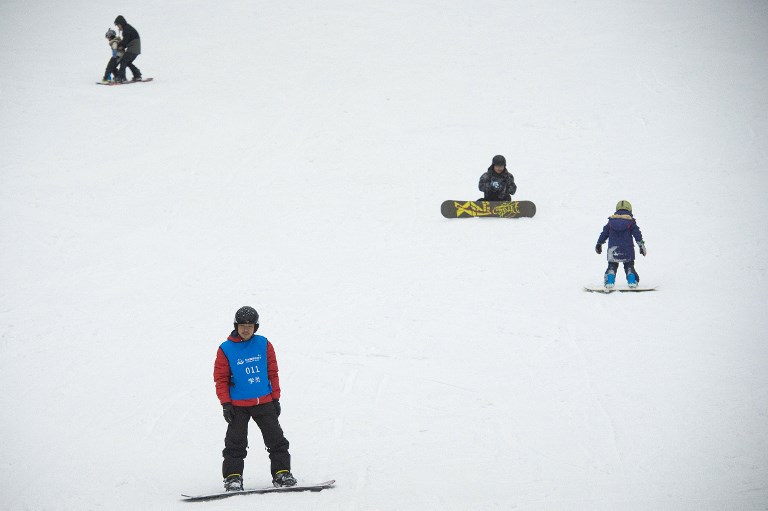
In this picture taken on August 22, 2017, people snowboard at the Wanda Harbin Ice and Snow Park in Harbin.
At Dalian Wanda Group’s new Ice and Snow Park, chilly winds blew snowflakes around skiers zipping down the manmade slopes of the world’s largest indoor ski park, a potent symbol of China’s ambitions to turn itself into a winter sports powerhouse ahead of the 2022 Winter Olympics in Beijing. / AFP PHOTO / Nicolas ASFOURI / TO GO WITH China-lifestyle-ski, FEATURE by Yanan WANG
BEIJING — Beijing, host of the 2022 Winter Olympic Games, has a snow problem: Hardly any of the white stuff falls on the Chinese capital despite freezing temperatures.
Taking the matter in hand, the games organizing committee has formed a “snow affairs work team” and invited experts from Finland, Canada and other nations to help out, according to the official “2017 Beijing Fact
File” produced by the city government.
The work team would “expedite research on key technologies for making and preserving snow, and start to formulate a work plan to ensure suitable snow resources,” the publication said.
Also on Thursday, Beijing Vice Mayor Zhang Jiandong said all venues and transport links for the games would be completed by the end of 2019, allowing Beijing to begin staging test events the next year.
“Progress on all these projects has been moving ahead smoothly,” Zhang said at a briefing on the sidelines of the twice-a-decade congress of China’s ruling Communist Party.
Beijing was awarded the games in 2015, defeating Almaty, Kazakhstan, in the voting to become the first city to have been awarded both the Summer and Winter Olympics.
Beijing’s urban center will host indoor events such as ice hockey and figure skating, largely in venues left over from the 2008 Beijing Summer Olympics. However, a lack of mountains and natural snow requires that ski events be held at sports clusters in Chongli as well as Beijing’s rural Yanqing county, both of which will be connected to the city center by a high-speed rail line.